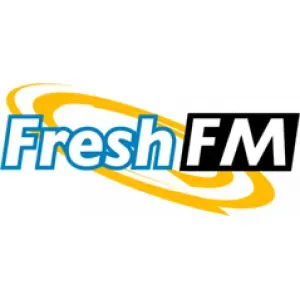Radio C89.5 (KNHC)

0
Share
Embed code
0
0
[
Seattle's Hottest Music
]KNHC (C-89.5) is a student-run radio station based in Seattle, Washington. It is a class C1 non-commercial FM station that primarily broadcasts dance and contemporary hit music. KNHC is one of six stations monitored by Nielsen BDS for inclusion in Billboard Magazine's weekly Hot Dance Airplay chart. The station's best coverage is in the Seattle metro area. Here is a timeline of KNHC's history: 1960s - December 1969: The station goes on the air as 'KNH' at 100 milliwatts at 1210 AM. 1970s - January 1971: Calls change to KNHC, goes on the air at ... See more
Seattle FM|89.5
+1206-421-8989
[email protected]
10750 30th Ave NESeattle, WA 98125
http://www.c895.org/
last update
[2024-03-15 06:24:34]
Views:
34Recommended radio stations:
KNHC (C-89.5) is a student-run radio station based in Seattle, Washington. It is a class C1 non-commercial FM station that primarily broadcasts dance and contemporary hit music. KNHC is one of six stations monitored by Nielsen BDS for inclusion in Billboard Magazine's weekly Hot Dance Airplay chart. The station's best coverage is in the Seattle metro area.
Here is a timeline of KNHC's history:
1960s
- December 1969: The station goes on the air as 'KNH' at 100 milliwatts at 1210 AM.
1970s
- January 1971: Calls change to KNHC, goes on the air at 10 watts at 89.5 FM, covering about a 5-mile circle in the north end of Seattle with an audience of approximately 5,000 to 15,000 listeners.
- September 1972: Power is increased to 320 watts with a directional antenna.
- January 1973: Station goes to stereo operations.
- November 1974: Power is increased to 1,500 watts directional.
- December 1977: HEW/NTIA grant creates a sister studio at Cleveland High School on Beacon Hill. The mass communications magnet school program at Hale begins, including courses in radio, television, journalism, photography, and graphic arts.
1980s
- Early 80s: KNHC played a light rock/pop format during the day, with specialty shows in the evenings and on weekends, including jazz and classical.
- October 1981: Power is increased to 3 kW non-directional.
- 1982: KNHC adopted an R&B/urban format, and the number of listeners rapidly increased. Since then, the station's focus has remained on danceable and rhythmic music.
- 1983: KNHC begins to use the nickname 'C89-FM' for buffers; 'KNHC-FM' still used for top-of-hour legal ID.
- December 1983: Jack Straw Memorial Foundation's KRAB files with the FCC to force the Seattle School District to share KNHC's frequency. The school district fights the takeover attempt.
- April 1984: KNHC installs a satellite dish to receive the Sheridan Broadcasting Network.
- July 1986: A BE 3.5 kW transmitter is installed extending C89.5's power to 10 kW.
- February 1986: The FCC designates the KRAB case to full-scale federal hearing.
- August 1987: Unique Jampro 6-bay state-of-the-art antenna is installed minimizing downward signal.
- June 1987: Microwave studio transmitter link is installed.
- February 1987: Associated Press NewsPower satellite newsfeed is installed.
- May 1988: Federal courts rule in favor of KNHC.
- January 1989: KNHC prevails over a federal appeal by Jack Straw.
1990s
- September 1990: Magnet grant is awarded to enhance the radio and TV program.
- June 1990: QEI transmitter is installed extending operations to 30 kW.
- March 1991: Radio facility is renovated; second production studio, engineering room, and offices are built.
- December 1994: Formed articulation agreement with Boise State University which gives station workers opportunities for higher education. Jobs, college credits, and scholarships are made available. Two students participate in the program in its first year.
- September 1995: Introduced digital audio technology with three digital audio editing workstations.
- January 1997: Moved to digital station operation with the introduction of a digital music stream and placement of computer workstations in every studio.
- April 1998: Station launches www.c895fm.com website.
2000s
- January 2000: Moved to MiniDisc recording elements and programs, making the station completely tapeless and completing the studio transition to all digital.
- August 2000: Completely remodeled and rewired all three studios with new audio consoles and furniture.
- June 2001: Received FCC construction permit to build a new transmission facility on Cougar Mountain.
- July 2002: Began transmitting from Cougar Mountain, significantly extending the reach of the signal to the north and filling in "dead spots".
- October 2003: KNHC named "Best of New York" high school radio stations by The Village Voice, thanks to its internet audio stream.
- March 2004: Becomes the first non-commercial station in the United States to be a monitored reporter when they join the Billboard Magazine dance radio airplay panel.
- June 2006: A 128 kbit/s shoutcast stream was added due to popular demand.
- January 2008: KNHC installed a new transmitter on Cougar Mountain and upgraded to HD radio.
- November 2009: KNHC moves into brand-new digital studios and classroom at Nathan Hale.
- September 2010: KNHC founder Larry Adams turns a milestone 70 years old since retiring from Hale in 1997. [*]
Here is a timeline of KNHC's history:
1960s
- December 1969: The station goes on the air as 'KNH' at 100 milliwatts at 1210 AM.
1970s
- January 1971: Calls change to KNHC, goes on the air at 10 watts at 89.5 FM, covering about a 5-mile circle in the north end of Seattle with an audience of approximately 5,000 to 15,000 listeners.
- September 1972: Power is increased to 320 watts with a directional antenna.
- January 1973: Station goes to stereo operations.
- November 1974: Power is increased to 1,500 watts directional.
- December 1977: HEW/NTIA grant creates a sister studio at Cleveland High School on Beacon Hill. The mass communications magnet school program at Hale begins, including courses in radio, television, journalism, photography, and graphic arts.
1980s
- Early 80s: KNHC played a light rock/pop format during the day, with specialty shows in the evenings and on weekends, including jazz and classical.
- October 1981: Power is increased to 3 kW non-directional.
- 1982: KNHC adopted an R&B/urban format, and the number of listeners rapidly increased. Since then, the station's focus has remained on danceable and rhythmic music.
- 1983: KNHC begins to use the nickname 'C89-FM' for buffers; 'KNHC-FM' still used for top-of-hour legal ID.
- December 1983: Jack Straw Memorial Foundation's KRAB files with the FCC to force the Seattle School District to share KNHC's frequency. The school district fights the takeover attempt.
- April 1984: KNHC installs a satellite dish to receive the Sheridan Broadcasting Network.
- July 1986: A BE 3.5 kW transmitter is installed extending C89.5's power to 10 kW.
- February 1986: The FCC designates the KRAB case to full-scale federal hearing.
- August 1987: Unique Jampro 6-bay state-of-the-art antenna is installed minimizing downward signal.
- June 1987: Microwave studio transmitter link is installed.
- February 1987: Associated Press NewsPower satellite newsfeed is installed.
- May 1988: Federal courts rule in favor of KNHC.
- January 1989: KNHC prevails over a federal appeal by Jack Straw.
1990s
- September 1990: Magnet grant is awarded to enhance the radio and TV program.
- June 1990: QEI transmitter is installed extending operations to 30 kW.
- March 1991: Radio facility is renovated; second production studio, engineering room, and offices are built.
- December 1994: Formed articulation agreement with Boise State University which gives station workers opportunities for higher education. Jobs, college credits, and scholarships are made available. Two students participate in the program in its first year.
- September 1995: Introduced digital audio technology with three digital audio editing workstations.
- January 1997: Moved to digital station operation with the introduction of a digital music stream and placement of computer workstations in every studio.
- April 1998: Station launches www.c895fm.com website.
2000s
- January 2000: Moved to MiniDisc recording elements and programs, making the station completely tapeless and completing the studio transition to all digital.
- August 2000: Completely remodeled and rewired all three studios with new audio consoles and furniture.
- June 2001: Received FCC construction permit to build a new transmission facility on Cougar Mountain.
- July 2002: Began transmitting from Cougar Mountain, significantly extending the reach of the signal to the north and filling in "dead spots".
- October 2003: KNHC named "Best of New York" high school radio stations by The Village Voice, thanks to its internet audio stream.
- March 2004: Becomes the first non-commercial station in the United States to be a monitored reporter when they join the Billboard Magazine dance radio airplay panel.
- June 2006: A 128 kbit/s shoutcast stream was added due to popular demand.
- January 2008: KNHC installed a new transmitter on Cougar Mountain and upgraded to HD radio.
- November 2009: KNHC moves into brand-new digital studios and classroom at Nathan Hale.
- September 2010: KNHC founder Larry Adams turns a milestone 70 years old since retiring from Hale in 1997. [*]
© LogFM.com, 2009-2025 (2026-01-06,21:08:46)





